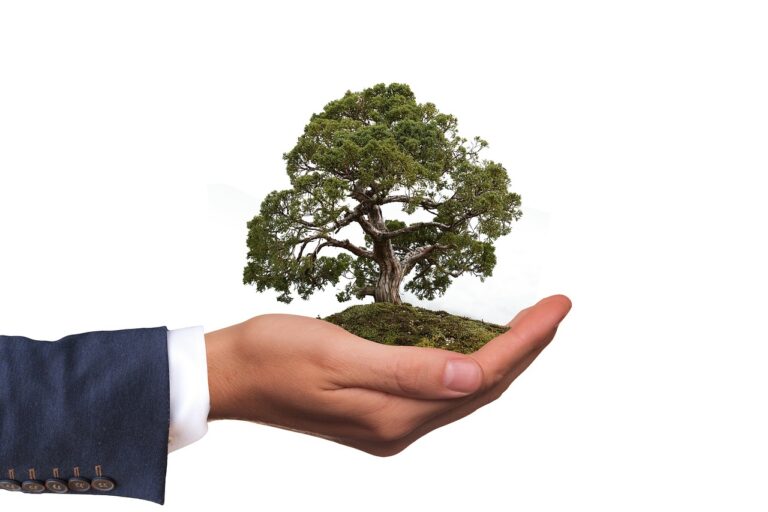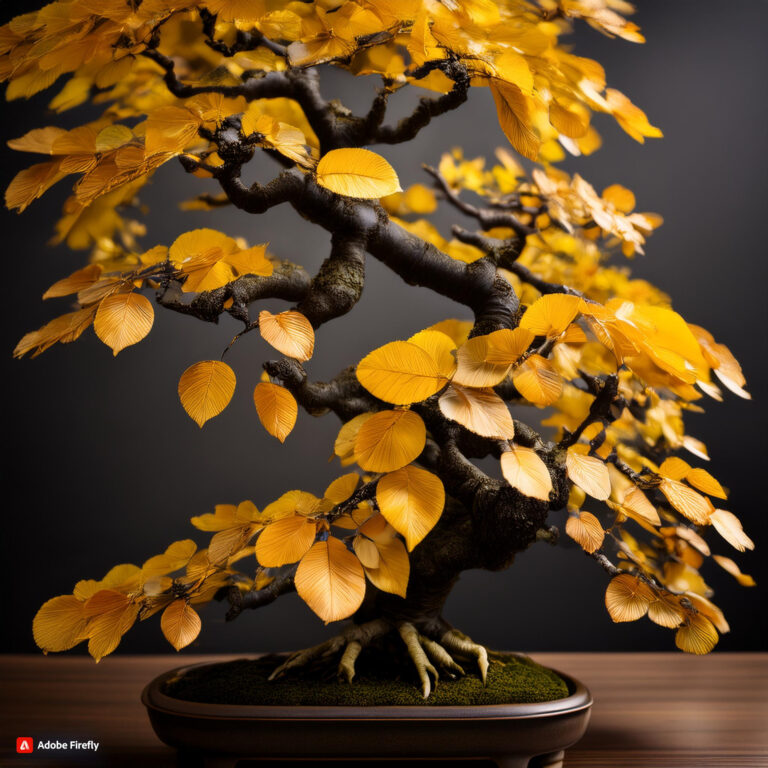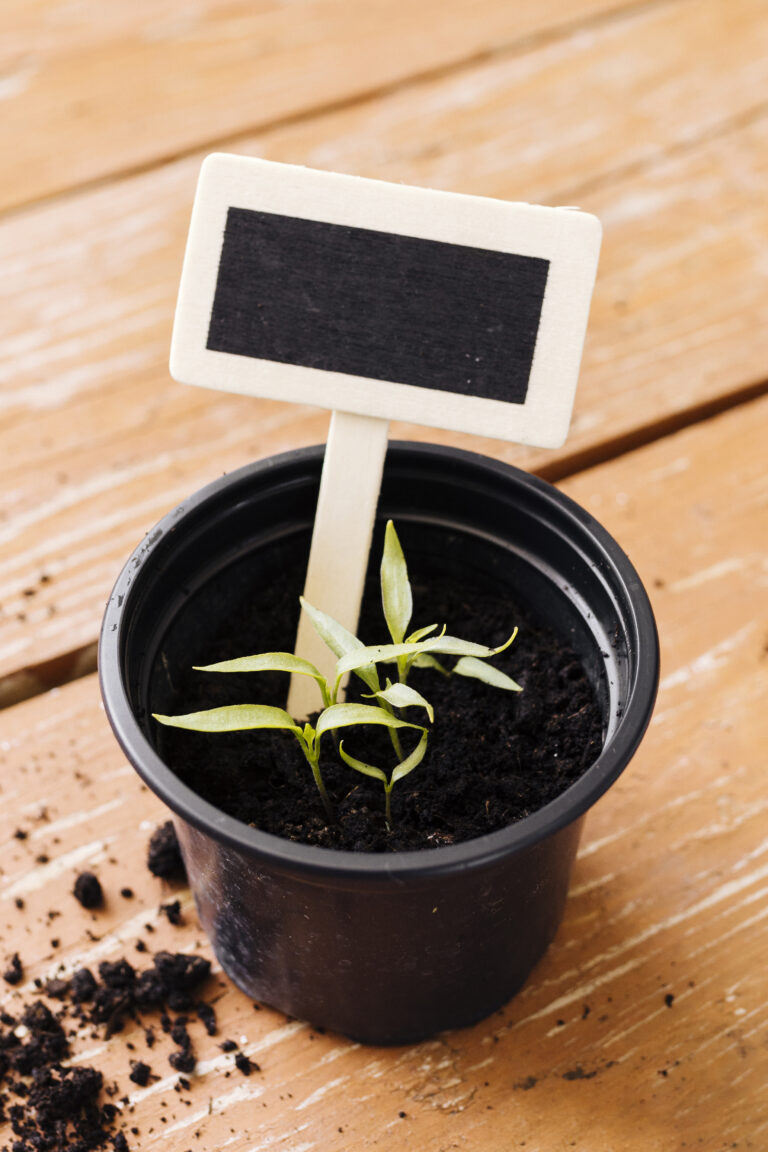Are bonsai trees actually trees?

When people think of trees, they often picture towering giants that reach for the sky. But what about the miniature versions that fit in the palm of your hand? Bonsai trees may be small in size, but they have a big impact on the world of horticulture.
In this article, we will delve into the question that many have pondered: are bonsai trees actually trees? To answer this query, we will explore the origins of bonsai, its unique cultivation techniques, and its distinct characteristics. Bonsai, which translates to “tray planting” in Japanese, is an ancient art form that originated in China over a thousand years ago before spreading to Japan. These miniature trees are created through meticulous pruning and shaping, resulting in a compact and artistic representation of nature.
As we unravel the mysteries of bonsai, we will examine whether they meet the scientific definition of trees, and if they do, what sets them apart from their larger counterparts. Get ready to explore the intricate world of bonsai trees and discover the magic they hold within their small branches.
Are bonsai trees actually trees?
are bonsai trees actually trees? Bonsai trees are not your typical trees. They are living works of art, meticulously crafted to resemble their larger counterparts in nature. The word “bonsai” itself is derived from two Japanese characters: “bon,” meaning tray or pot, and “sai,” meaning planting. This art form involves growing and cultivating miniature trees in containers, with the aim of achieving a harmonious balance between the tree and its container.
Bonsai trees come in various shapes, sizes, and species, but they all share one thing in common: they are designed to mimic the appearance of mature, full-sized trees in nature. Despite their small stature, bonsai trees display all the characteristics of their larger counterparts, such as a trunk, branches, foliage, and even flowers or fruits, depending on the species.
Bonsai trees are not simply miniaturized versions of trees; they are carefully cultivated and shaped to create an aesthetic representation of nature. The art of bonsai involves a combination of techniques, including pruning, wiring, and shaping, to create a tree that embodies the essence of age and maturity. Each bonsai tree is a unique expression of the cultivator’s vision and creativity.
The history and origins of bonsai trees
The art of bonsai has a rich and fascinating history that dates back over a thousand years. While bonsai is often associated with Japanese culture, its origins can be traced back to ancient China during the Tang dynasty (618-907 AD). It was during this time that the Chinese developed the practice of growing small trees in containers, which eventually spread to Japan.
In Japan, bonsai evolved into a highly revered art form, deeply rooted in Zen Buddhism and the principles of harmony, balance, and simplicity. The Japanese embraced the art of bonsai and refined it, elevating it to a level of sophistication and mastery that is admired and practiced worldwide today.
The cultivation of bonsai trees was initially reserved for the elite and the aristocracy, who saw it as a symbol of wealth, power, and status. However, over time, bonsai became more accessible to the general public, and people from all walks of life began to appreciate and practice this ancient art form.
The art of bonsai tree cultivation
Bonsai cultivation is a meticulous and time-consuming process that requires patience, skill, and an understanding of the tree’s natural growth patterns. The first step in creating a bonsai tree is selecting a suitable species. While almost any tree or shrub can be grown as a bonsai, certain species are more commonly used due to their aesthetic qualities and adaptability to bonsai cultivation.
Once a suitable species is chosen, the next step is to carefully prune and shape the tree to achieve the desired form. Pruning involves removing excess growth, including branches, leaves, and roots, to create a well-proportioned tree. Shaping, on the other hand, involves wiring and bending the branches to create the desired silhouette and movement.
In addition to pruning and shaping, bonsai trees require regular watering, fertilizing, and repotting to ensure their health and longevity. The amount of water and fertilizer needed depends on the species and the season, as well as the size and age of the tree. Repotting is necessary to prevent the tree from becoming root-bound and to provide fresh soil and nutrients.
Common misconceptions about bonsai trees
There are several misconceptions surrounding bonsai trees that often lead to misunderstandings about this ancient art form. One common misconception is that bonsai trees are genetically modified or stunted in growth. In reality, bonsai trees are not genetically altered; they are simply cultivated and trained to grow in a confined space, which restricts their size.
Another misconception is that bonsai trees are delicate and fragile. While bonsai trees do require special care and attention, they are not as delicate as they may appear. With proper care and maintenance, bonsai trees can live for decades, and some have even been known to survive for centuries.
It is also important to debunk the myth that bonsai trees are expensive and inaccessible. While there are rare and valuable bonsai trees that can fetch high prices, there are also affordable options available for beginners or those on a budget. Bonsai trees can be grown from seeds or cuttings, and with time and patience, they can be shaped and trained into beautiful specimens.
How bonsai trees are different from regular trees
Bonsai trees may share many similarities with their larger counterparts, but there are also distinct differences that set them apart. One obvious difference is their size. While regular trees can grow to towering heights, bonsai trees are intentionally kept small and compact through regular pruning and shaping.
Another difference is the way bonsai trees are grown. Regular trees grow freely in nature, following their natural growth patterns. Bonsai trees, on the other hand, are cultivated and shaped by human hands to create a desired form and aesthetic. This level of control and manipulation is what makes bonsai trees unique.
Bonsai trees also require special care and maintenance compared to regular trees. Because they are grown in containers, bonsai trees have limited access to water and nutrients. As a result, they require regular watering, fertilizing, and repotting to ensure their health and vitality.
Benefits of owning a bonsai tree
Owning a bonsai tree can bring numerous benefits, both aesthetic and emotional. From a visual standpoint, bonsai trees add a touch of natural beauty and tranquility to any space. Their miniature size and intricate details make them perfect for decorating small spaces or adding a focal point to a larger area.
In addition to their aesthetic appeal, bonsai trees also have a calming and meditative effect. The process of caring for a bonsai tree, such as pruning, watering, and shaping, requires focus and attention to detail. This mindful practice can help reduce stress and anxiety, promoting a sense of calm and well-being.
Bonsai trees also serve as a reminder of the beauty and resilience of nature. Despite their small size, bonsai trees embody the strength and endurance of their larger counterparts. They serve as a metaphor for life, reminding us to appreciate the present moment and to nurture and care for the things that bring us joy.
Popular species of bonsai trees
There are countless species of trees and shrubs that can be grown as bonsai, each with its own unique characteristics and requirements. Some of the most popular species include:
- Juniper: Juniper bonsai trees are known for their hardiness and rugged appearance. They have needle-like foliage and can be shaped into various styles, including cascade, windswept, and informal upright.
- Pine: Pine bonsai trees are admired for their distinctive needles and rugged bark. They are often grown in formal upright or informal upright styles and require a well-drained soil mix to thrive.
- Maple: Maple bonsai trees are prized for their vibrant foliage and stunning autumn colors. They are often grown in the informal upright or cascade styles and require regular pruning to maintain their shape.
- Elm: Elm bonsai trees are popular for their graceful branches and delicate leaves. They can be shaped into various styles, including broom, informal upright, and cascade.
- Ficus: Ficus bonsai trees are favored for their glossy leaves and ability to adapt to indoor environments. They can be grown in a variety of styles and are suitable for beginners.
How to care for a bonsai tree?
Proper care is essential for the health and longevity of a bonsai tree. Here are some general guidelines to help you care for your bonsai tree:
- Watering: Bonsai trees should be watered regularly to ensure they receive an adequate amount of moisture. The frequency of watering depends on factors such as the species, climate, and time of year. It is important to avoid both overwatering and underwatering, as both can be detrimental to the tree’s health.
- Fertilizing: Bonsai trees require regular fertilizing to provide them with essential nutrients. Use a balanced fertilizer specifically formulated for bonsai, and follow the instructions on the packaging for proper application.
- Pruning: Regular pruning is necessary to maintain the shape and size of a bonsai tree. Prune back new growth, remove any dead or diseased branches, and thin out dense foliage to promote airflow and light penetration.
- Wiring: Wiring is a technique used to shape the branches of a bonsai tree. Copper or aluminum wire is wrapped around the branches and gently bent into the desired position. It is important to check the wire regularly to avoid it cutting into the bark.
- Repotting: Bonsai trees should be repotted every few years to prevent the roots from becoming root-bound and to refresh the soil. Repotting is typically done during the spring when the tree is actively growing.
Bonsai tree styles and techniques
Bonsai trees can be styled in a variety of ways, each with its own unique characteristics and aesthetic appeal. Here are some of the most common bonsai tree styles:
- Formal upright: In this style, the trunk of the bonsai tree grows straight and upright, with branches gradually decreasing in size as they ascend the tree.
- Informal upright: This style mimics the natural growth pattern of trees in nature. The trunk of the bonsai tree is slightly curved or twisted, giving it a more organic and informal appearance.
- Cascade: In this style, the trunk of the bonsai tree cascades downwards, creating a sense of movement and flow. The branches and foliage are often arranged to mimic the appearance of a tree growing on a cliff or near a water source.
- Windswept: This style emulates the effect of strong winds on a tree. The trunk and branches of the bonsai tree are bent and twisted in one direction, giving the impression of a tree that has been shaped by the elements.
- Broom: In this style, the branches of the bonsai tree radiate outwards from a central point, creating a symmetrical and balanced appearance. The foliage is typically dense and compact.
To achieve these styles, various techniques such as pruning, wiring, and shaping are used. Each technique requires careful consideration and skill to bring out the desired form and aesthetic.
Conclusion: The beauty and significance of bonsai trees
In conclusion, bonsai trees may be small in size, but they have a profound impact on the world of horticulture. The art of bonsai, with its rich history and meticulous cultivation techniques, has captivated the hearts of people around the globe. While bonsai trees meet the scientific definition of trees, they are unique in their cultivation and aesthetic qualities.
Owning a bonsai tree is not only a way to bring the beauty of nature into your home or garden, but it is also a way to connect with the principles of balance, harmony, and mindfulness. Caring for a bonsai tree requires patience, skill, and an appreciation for the intricacies of nature.
So, the next time you see a bonsai tree, take a moment to admire its miniature beauty and reflect on the centuries-old tradition that has shaped it. Bonsai trees may be small, but their impact is immeasurable. They remind us of the beauty and resilience of nature and the artistry that can be found in even the smallest of things.
Now that you have a deeper understanding of “are bonsai trees actually trees? why not explore this ancient art form for yourself? Whether you choose to cultivate your own bonsai tree or simply appreciate them from afar, the world of bonsai awaits, ready to inspire and captivate you with its miniature wonders.







Your style is so unique compared to many other people. Thank you for publishing when you have the opportunity,Guess I will just make this bookmarked.2
Pretty! This was a really wonderful post. Thank you for your provided information.
I’m still learning from you, but I’m making my way to the top as well. I absolutely enjoy reading everything that is written on your site.Keep the stories coming. I liked it!
Thanks , I’ve recently been searching for info about this topic for a long time and yours is the greatest I’ve came upon till now. However, what in regards to the conclusion? Are you positive in regards to the source?
Perfect piece of work you have done, this site is really cool with good information.
F*ckin¦ tremendous issues here. I am very glad to see your article. Thanks so much and i’m having a look forward to contact you. Will you kindly drop me a mail?
Howdy! Do you know if they make any plugins to protect against hackers? I’m kinda paranoid about losing everything I’ve worked hard on. Any suggestions?
Lovely blog! I am loving it!! Will be back later to read some more. I am bookmarking your feeds also.
Hiya very cool blog!! Guy .. Beautiful .. Wonderful .. I’ll bookmark your site and take the feeds alsoKI’m glad to find a lot of helpful info here within the post, we need work out more strategies in this regard, thanks for sharing. . . . . .
I really like assembling utile information , this post has got me even more info! .
Профессиональный сервисный центр по ремонту бытовой техники с выездом на дом.
Мы предлагаем:сервисные центры в москве
Наши мастера оперативно устранят неисправности вашего устройства в сервисе или с выездом на дом!
Here to explore discussions, share thoughts, and gain fresh perspectives along the way.
I enjoy learning from different perspectives and contributing whenever I can. Happy to hear different experiences and building connections.
Here’s my web-site:https://automisto24.com.ua/
Hello There. I discovered your weblog using msn. That is a really neatly written article. I’ll be sure to bookmark it and come back to learn more of your useful information. Thank you for the post. I’ll certainly return.
Incredible! This blog looks just like my old one! It’s on a completely different subject but it has pretty much the same layout and design. Great choice of colors!
I think this is among the most important info for me. And i am glad reading your article. But should remark on some general things, The site style is wonderful, the articles is really nice : D. Good job, cheers
I was reading some of your blog posts on this internet site and I think this website is really informative ! Retain posting.